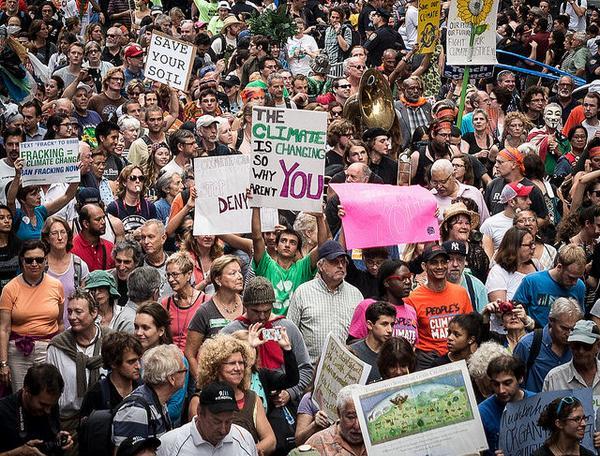Consider the carbon. If you fly to the People's Climate March in New York City September 21st, then you're spewing copious carbon dioxide into the atmosphere. Same is true if you're driving or even taking the train, though far less of course.
说到碳,如果你搭飞机到纽约参加 9月21号的“人民应对气候变化游行”,大量的二氧化碳便会排放到空气中。开车或乘火车也一样,尽管排放的二氧化碳远不及搭飞机的多。
So the People's Climate March itself won't lower the amount of CO2 pollution in the atmosphere. But the sight of thousands of people at the march—including Secretary General of the United Nations Ban-ki Moon and other luminaries—might help convince world leaders that the fight against climate change has popular support. And more than 125 such leaders, including President Obama, are expected at the Secretary General's climate summit this week.
因此,“人民应对气候变化游行”本身并不能降低空气中的二氧化碳排放量,但从参加该活动的人数来看(达成千上万人次)——其中包括联合国秘书长潘基文和其他一些知名人士——大概足以向各国领导人证明:对抗气候变化已深入人心。更有125名类似级别的领导人(其中包括奥巴马总统)将有望出席联合国秘书长举办的气候峰会,该气候峰会将于这周举行。

The good news is that there are steps to take that we know work to combat climate change. Whether that be international treaties like the Montreal Protocol or replacing fossil fuel burning with renewable power or even nuclear, there are policies that work if world leaders have the courage to adopt them.
好消息是:我们知道如何应对气候变化。无论采用的方法是什么,如:制定国际公约(像蒙特利尔议定书);将可再生能源、甚至核能取代化石燃料,如果各国领导人有勇气采纳,总会有行之有效的应对政策。
So if all those marchers can convince world leaders to take action, then their one-time CO2 output will be worth it.
如果那些游行者可以说服各国领导人采取行动,那么,他们参加“人民应对气候变化游行”时排放的一次性二氧化碳是值得的。












